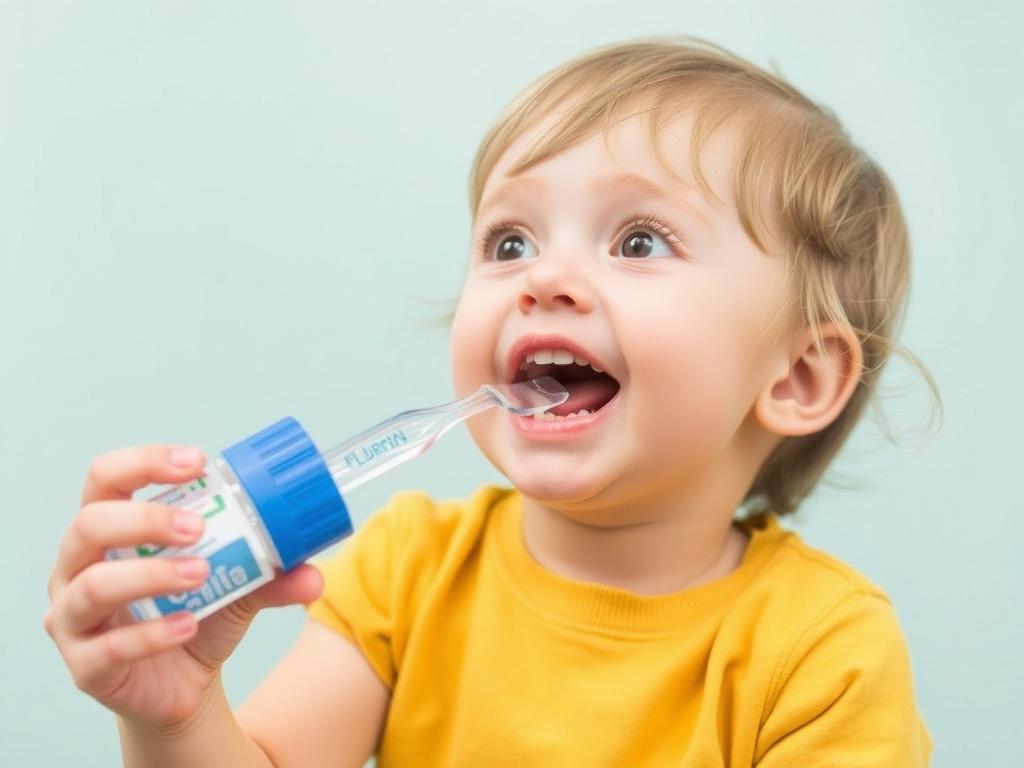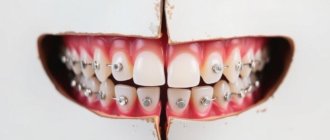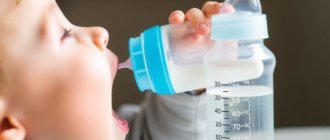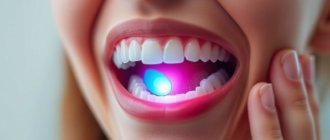Fluoride is a fascinating and sometimes controversial mineral, especially when it comes to children’s health. Parents often wonder, “How much fluoride is safe for my child?” It’s a question that deserves a thorough and thoughtful answer because fluoride plays a crucial role in dental health but too much can lead to problems. In this article, we’ll explore everything you need to know about fluoride for children. We will discuss what fluoride is, why it’s important, the recommended amounts for kids, potential risks, and practical tips for using fluoride safely at home and beyond. Whether you’re a new parent or someone simply curious about fluoride, this article aims to clear up any confusion and help you make informed decisions.
Содержание
- 1 What Is Fluoride and Why Is It Important for Children?
- 2 How Much Fluoride Is Recommended for Children?
- 3 Safe Fluoride Use in Children: Practical Tips for Parents
- 4 Risks and Concerns of Fluoride in Children
- 5 How to Monitor Fluoride Intake for Your Child
- 6 Debunking Common Myths About Fluoride and Children
- 7 Helping Your Child Develop Healthy Habits With Fluoride
- 8 Additional Resources and Support
What Is Fluoride and Why Is It Important for Children?
Fluoride is a naturally occurring mineral found in water, soil, plants, and even rocks. In the world of dental health, fluoride is prized because it helps strengthen tooth enamel, making teeth more resistant to decay. This is particularly important for children, whose baby and permanent teeth develop and are more vulnerable to cavities. Fluoride works by remineralizing enamel and inhibiting the growth of harmful bacteria in the mouth.
For decades, fluoride has been added to community water supplies, toothpaste, and mouth rinses as a preventive measure. The Centers for Disease Control and Prevention (CDC) has called water fluoridation one of the greatest public health achievements of the 20th century for its role in drastically reducing dental caries (cavities). Children who receive the right amount of fluoride tend to have stronger, healthier teeth, which translates to fewer cavities and less need for dental work.
The Role of Fluoride in Early Childhood
Even before children’s teeth fully emerge, fluoride benefits begin to build. Expectant mothers consume fluoride through water and diet, which helps in the initial stages of tooth development in the womb. Once teeth begin to appear, fluoride continues to work from both systemic sources (like drinking water) and topical sources (like toothpaste).
It’s important to note that fluoride is more beneficial when incorporated in small, controlled amounts rather than large doses. The challenge is balancing the benefits while avoiding potential side effects such as dental fluorosis—a condition where too much fluoride causes discoloration or pitting of the enamel.
How Much Fluoride Is Recommended for Children?
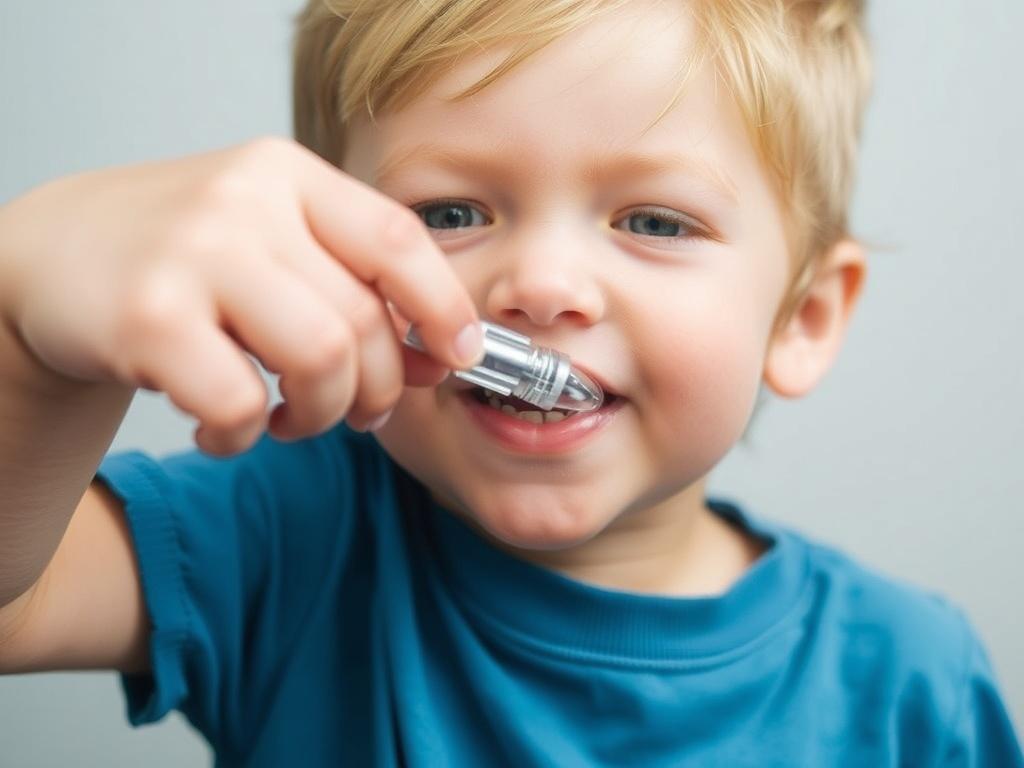
One of the most frequently asked questions is, “How much fluoride should my child be getting daily?” The truth is there isn’t a one-size-fits-all answer, but there are established guidelines based on age and total fluoride exposure.
Recommended Fluoride Intake by Age
Fluoride intake recommendations are usually expressed in milligrams per day (mg/day). The following table summarizes the general guidelines for children according to the Institute of Medicine and other dental health organizations:
| Age Group | Recommended Fluoride Intake (mg/day) | Upper Limit (mg/day) |
|---|---|---|
| 0-6 months | 0.01 mg | 0.7 mg |
| 7-12 months | 0.5 mg | 0.9 mg |
| 1-3 years | 0.7 mg | 1.3 mg |
| 4-8 years | 1.0 mg | 2.2 mg |
| 9-13 years | 2.0 mg | 10 mg |
As you can see, younger children need much lower amounts of fluoride, and the upper limits prevent excessive exposure. The key objective is to remain within this range for optimal safety and effectiveness.
Sources of Fluoride Exposure
Understanding where children get fluoride helps parents manage intake safely. Here are typical fluoride sources:
- Drinking Water: Many public water systems add fluoride at concentrations around 0.7 mg/L, which is considered optimal for preventing tooth decay.
- Toothpaste: Most children’s toothpaste contains fluoride in varying strengths — usually around 1,000 to 1,500 parts per million (ppm).
- Fluoride Supplements: Sometimes prescribed by a dentist or pediatrician if water fluoridation is insufficient or unavailable.
- Fluoride Mouth Rinses: Occasionally used for high cavity risk children, usually from age 6 and up.
- Food and Beverages: Fluoride is naturally present in some foods and beverages, although levels vary widely.
Safe Fluoride Use in Children: Practical Tips for Parents
The concern many parents have goes beyond just numbers—it’s about real-world application. How can you use fluoride safely with your child to maximize benefits and minimize risks? Here are some guidelines backed by dental experts:
Toothpaste Use
One of the most common questions is, “When can my child start brushing with fluoride toothpaste?” The answer depends on age and motor skills:
- Under 2 years: Only a tiny smear of fluoride toothpaste, about the size of a grain of rice, should be used. Parents should brush for their infants and toddlers to ensure they don’t swallow the paste.
- 2-6 years: Use a pea-sized amount of fluoride toothpaste. Teach your child to spit it out after brushing, but it’s natural for some swallowing to occur. Close supervision is important.
- 6 years and older: Children can use a regular-sized fluoride toothpaste amount and should be encouraged to spit out all the toothpaste after brushing.
These guidelines help manage fluoride intake through toothpaste, which is often the largest source of fluoride for many kids.
Fluoride Supplements
Fluoride supplements come as tablets, drops, or lozenges and should only be given if recommended by a healthcare professional, especially if your child’s water source has very low fluoride levels (less than 0.3 mg/L). Overuse of supplements can increase the risk of dental fluorosis.
Fluoride in Drinking Water
Most communities in the United States and many other countries add fluoride to public water supplies. The fluoride concentration is carefully regulated to approximately 0.7 mg/L to prevent cavities while avoiding fluorosis. If your home uses well water, it’s wise to have the fluoride content checked.
Fluoride Mouth Rinses and Treatments
Professional fluoride treatments applied at a dental office are safe and effective. Mouth rinses with fluoride are generally not recommended for children under age 6 because they may swallow the rinse.
Risks and Concerns of Fluoride in Children
While fluoride is generally safe and effective, it’s important to understand potential risks, so parents can avoid them.
Dental Fluorosis
The most common risk from excess fluoride in young children is dental fluorosis. This condition appears as white streaks or spots on the tooth enamel and in severe cases can cause brown stains and enamel pitting. Fluorosis occurs only when children consume too much fluoride during the years when their teeth are developing (usually under age 8).
Dental fluorosis is primarily a cosmetic issue and does not affect teeth function, but that doesn’t downplay the importance of preventing it. Proper fluoride management in early childhood can keep fluorosis risks low.
Other Health Concerns
Some people worry about fluoride and potential other health effects like bone disease or neurotoxicity. Extensive scientific research has found no reliable evidence linking optimal fluoride use with such serious harms. Health organizations worldwide including the CDC, the American Dental Association (ADA), and the World Health Organization (WHO) support controlled fluoride use for tooth decay prevention.
How to Monitor Fluoride Intake for Your Child
Keeping an eye on your child’s fluoride exposure doesn’t have to be complicated. Here are some tips:
- Know your water fluoride level: Contact your local water provider or have your well water tested.
- Select age-appropriate toothpaste: Use children’s fluoride toothpaste with suitable fluoride levels and follow quantity recommendations.
- Supervise brushing: To minimize swallowing toothpaste, always supervise children while brushing their teeth.
- Discuss fluoride supplements with your health provider: Only give supplements if recommended.
- Be cautious with fluoride mouth rinses: Avoid use in children under 6 years old to prevent swallowing.
Fluoride Intake Chart for Reference
Here is a simple chart parents can use to remember safe fluoride intake limits:
| Age | Max Daily Fluoride Intake (mg/day) | Recommended Toothpaste Amount | Notes |
|---|---|---|---|
| Under 2 years | 0.7 mg | Rice grain-sized smear | Supervised brushing only |
| 2-6 years | 1.3 mg | Pea-sized amount | Teach spitting out toothpaste |
| 7-12 years | 2.2 mg | Regular adult amount | Encourage proper brushing habits |
Debunking Common Myths About Fluoride and Children
Fluoride often faces criticism or fear fueled by misinformation. Let’s clarify some of the most common fluoride myths:
Myth 1: Fluoride Is Toxic for Children
Truth: In the tiny, controlled doses found in water and toothpaste, fluoride is safe and beneficial for children’s teeth. Toxicity occurs only with extremely high doses, far exceeding everyday exposure.
Myth 2: Fluoride Causes ADHD or Other Brain Problems
Truth: Current scientific evidence does not support any link between fluoride at recommended levels and ADHD or cognitive issues.
Myth 3: Fluoride Is Not Necessary if You Brush Regularly
Truth: Brushing is essential, but fluoride enhances the protective effect by strengthening enamel, making teeth more resistant to decay.
Myth 4: Only Fluoridated Water Is Safe; Bottled Water Is Better
Truth: Bottled water often has little or no fluoride unless it’s specifically added. Children drinking only bottled water may miss out on fluoride benefits unless supplemented.
Helping Your Child Develop Healthy Habits With Fluoride
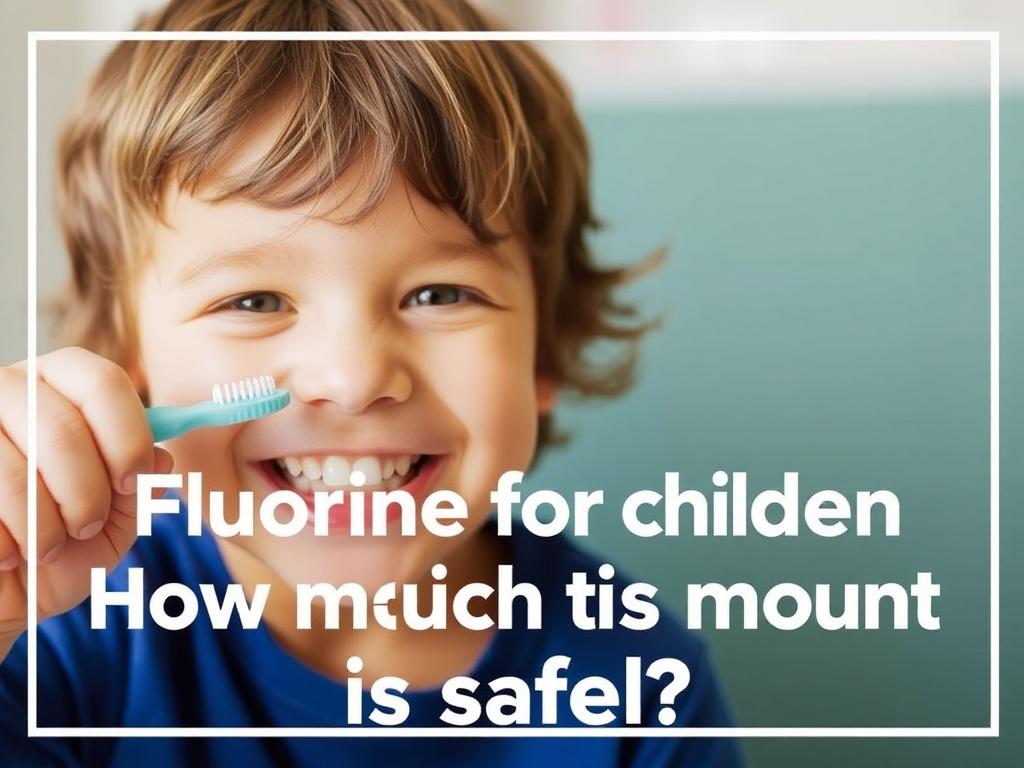
Fluoride is just one part of overall dental care. Teaching children good oral hygiene early creates a foundation for lifelong healthy teeth. Here are some simple strategies:
- Make brushing a fun and consistent routine, ideally twice a day.
- Use fluoride toothpaste appropriately for your child’s age.
- Schedule regular dental checkups starting by the child’s first birthday.
- Limit sugary snacks and drinks that contribute to cavities.
- Encourage spitting out toothpaste and rinsing after brushing as children grow older.
Parents who understand “how much fluoride is safe for children” can confidently guide their kids toward a healthy smile with minimal worries.
Additional Resources and Support
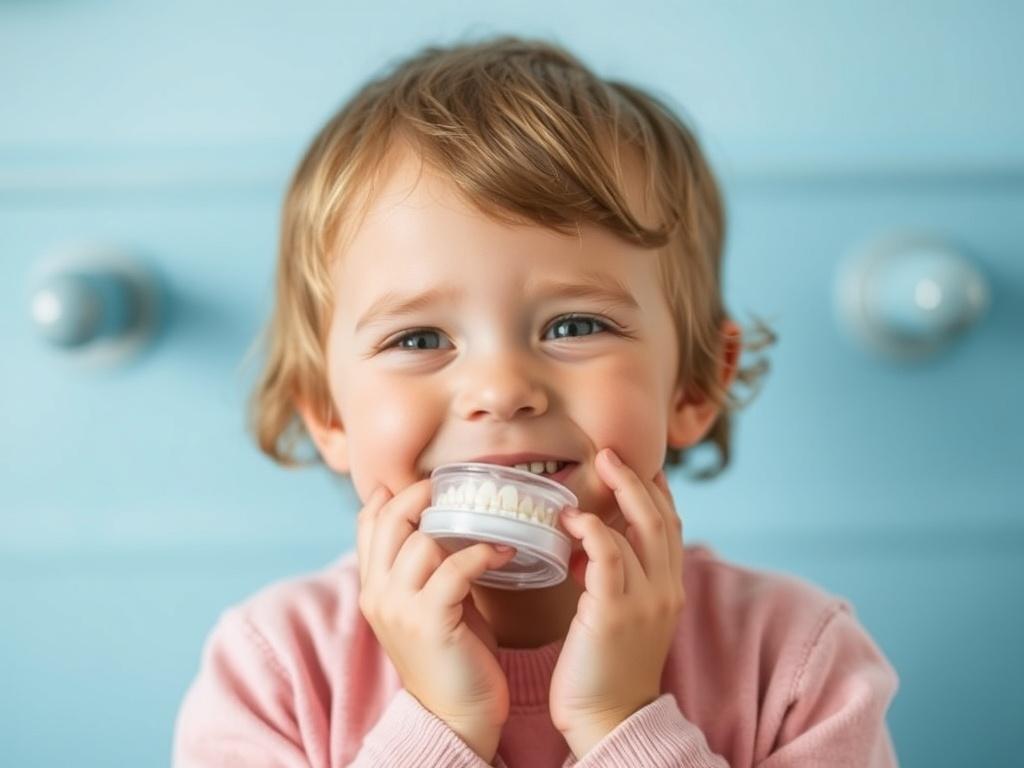
If you want to dive deeper or have specific concerns, many reputable resources are available:
- American Dental Association (ADA) – Fluoride information for parents
- Centers for Disease Control and Prevention (CDC) – Fluoridation basics
- National Institute of Dental and Craniofacial Research (NIDCR)
- Your pediatrician or family dentist – personalized guidance
Talking openly with your child’s healthcare providers can help tailor fluoride use to your family’s unique needs.
Conclusion
Navigating the world of fluoride for children can seem tricky, but understanding the basics helps parents make safe and smart choices. Fluoride is an essential mineral that strengthens young teeth and helps prevent cavities, but only when used in the right amounts. By following recommended guidelines on fluoride intake through water, toothpaste, supplements, and professional treatments, you can protect your child’s smile without risking overexposure. Monitoring fluoride sources, supervising toothbrushing, and maintaining regular dental visits are key steps in safeguarding your child’s oral health. Ultimately, fluoride is a powerful ally in your child’s dental care journey—one that, when managed well, sets the stage for a lifetime of healthy, beautiful teeth.

